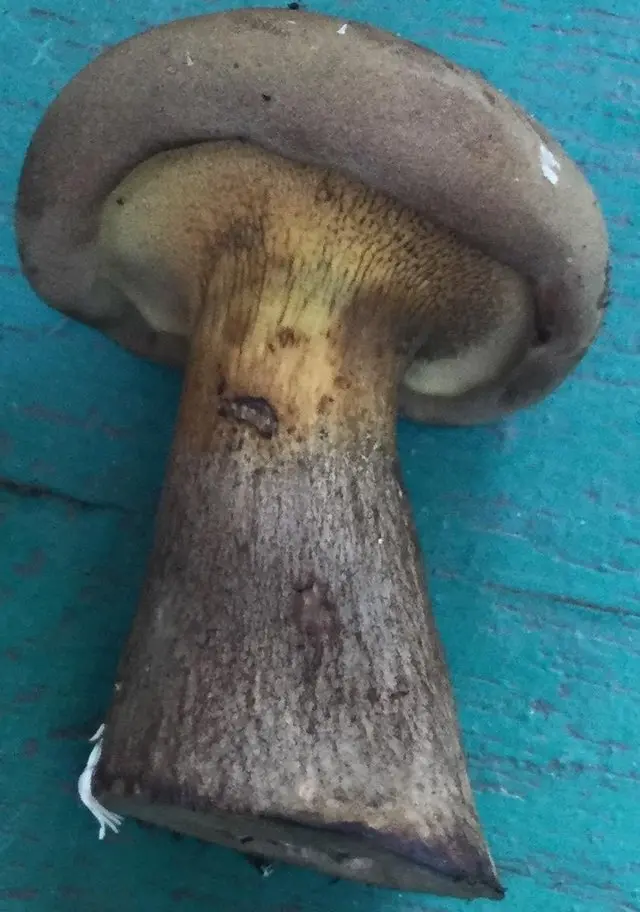Larch flywheel (Psiloboletinus lariceti)
- Division: Basidiomycota (Basidiomycetes)
- Subdivision: Agaricomycotina (Agaricomycetes)
- Class: Agaricomycetes (Agaricomycetes)
- Subclass: Agaricomycetidae (Agaricomycetes)
- Order: Boletales (Boletales)
- Family: Suillaceae
- Genus: Psiloboletinus (Psiloboletins)
- Type: Psiloboletinus lariceti (Larch flywheel)
:
- Boletinus lariceti
- Boletin larch

Psiloboletin is a genus of fungi in the Suillaceae family. It is a monotypic genus containing one species, Psiloboletinus lariceti. The species was first described by mycologist Rolf Singer in 1938 as Phylloporus. Alexander H. Smith disagreed with Singer’s general concept, concluding: “Whatever arrangement of the type species of Psiloboletinus is ultimately made, it is clear that there are no clearly distinguishable characters by which the genus can be recognized on basis of Singer’s descriptions.
“Larch” – from the word “larch” (a genus of woody plants of the pine family, one of the most common species of coniferous trees), and not from the word “deciduous” (deciduous forest – a forest consisting of deciduous trees and shrubs).
head: 8-16 cm in diameter, under favorable conditions specimens with hats of about 20 centimeters are possible. When young, convex, with a strongly turned-in edge, then flat-convex; in very adult mushrooms, the cap edge is not turned up, it may be slightly wavy or lobed. Dry, felty or felt-scaly, velvety to the touch. Brownish, ocher-brown, dirty brown.
Flesh in a hat: dense (not loose), soft, up to 3-4 cm thick. Light yellowish, light ocher, very pale, almost white. Turns blue on a fracture or cut.

Hymenophore: tubular. The tubules are large, wide, with thickened side walls, so they visually form a semblance of plates. They strongly descend onto the stem, where they become elongated, which makes their visual resemblance to the plates intensified. The hymenophore is yellow, light in youth, then yellowish brownish. With damage, even minor, it turns blue, then turns brown.
Споры: 10-12X4 microns, cylindrical, fusiform, brown-yellow with drops.
Leg: 6-9 centimeters high and 2-4 cm thick, central, may be thickened at the bottom or in the middle, velvety. In the upper part it is light, in the color of the hymenophore, yellowish brownish, below it is darker: brownish, brownish, dark brown. Turns blue when pressed. Whole, sometimes with a cavity.
leg pulp: dense, brownish, bluish.

Ring, cover, volva: None.
Taste and smell: slight mushroom.
It grows only in the presence of larch: in larch forests and mixed forests with the presence of birch, aspen, under larch.
Peak fruiting is in August-September. It is well known only in Our Country, found in Western and Eastern Siberia, the Amur Region, the Khabarovsk Territory, in the Far East, it bears fruit especially often and abundantly on Sakhalin, where it is called “Larch Mokhovik” or simply “Mokhovik”.
The mushroom is edible, there is no evidence of poisoning. It is used for preparation of soups, salads, second courses. Suitable for pickling.
The pig is thin in some stages of growth can be mistaken for a larch moss fly. You should carefully look at the hymenophore: in the pig it is lamellar, in young specimens the plates are wavy, so that with a cursory glance they can be mistaken for large tubules. An important difference: the pig does not turn blue, but turns brown when tissues are damaged.
Gyrodons are quite similar to Psiloboletinus lariceti, you should pay attention to ecology (forest type).
Goat, differs in the color of the pulp in the damaged areas, its flesh does not turn blue, but reddens.
Purposeful studies have been carried out, there are works on the thrombolytic properties of basid fungi enzymes (V. L. Komarov Botanical Institute of the Academy of Sciences, St. Petersburg, Our Country), where a high fibrinolytic activity of enzymes isolated from Psiloboletinus lariceti is noted. However, it is too early to talk about wide application in pharmacology.
Photo in the gallery of the article: Anatoly Burdynyuk.









